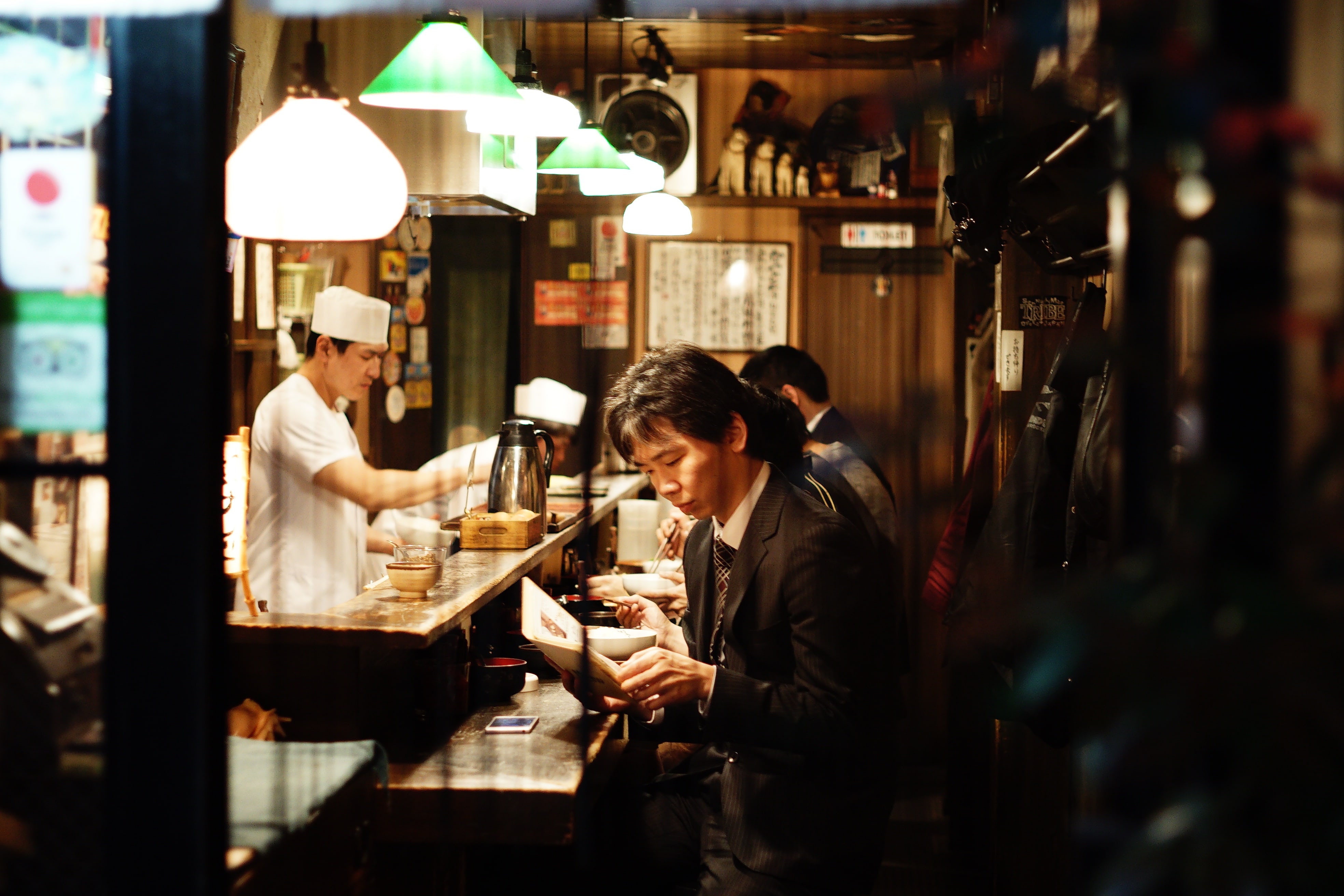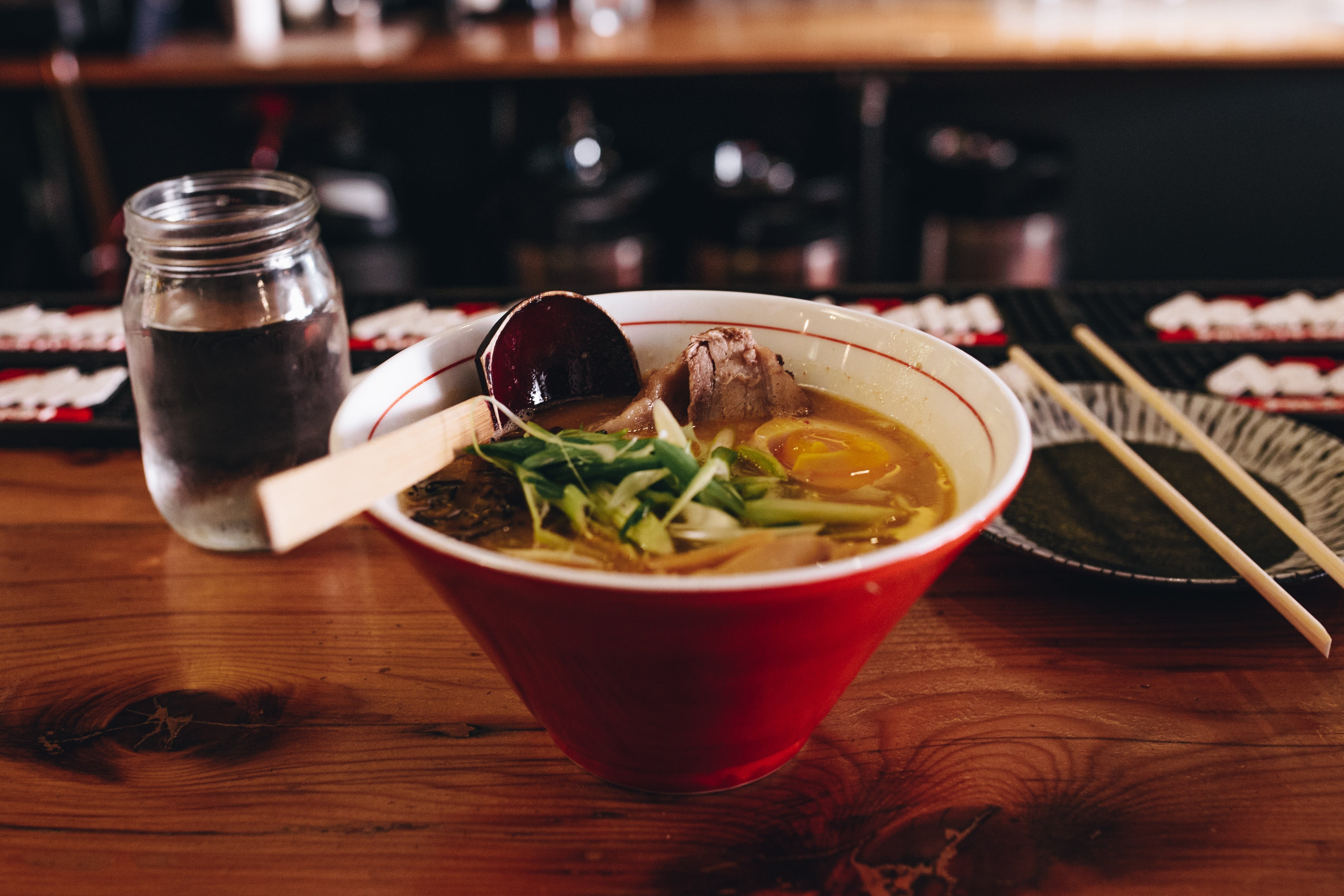
BBQ Sessions: Burgers
Stop serving hockey pucks this summer.

Written by: Wiki Pedia
Date Published: June 9 2017
The origin of ramen is unclear. Some sources say it is of Chinese origin. Other sources say it was invented in Japan in the early 20th century.The word ramen is a Japanese borrowing of the Chinese lamian (拉麵). Until the 1950s, ramen was called shina soba (支那そば, literally "Chinese soba") but today chūka soba (中華そば, also meaning "Chinese soba") or just Ramen (ラーメン) are more common, as the word "支那" (shina, meaning "China") has acquired a pejorative connotation.
By 1900, restaurants serving Chinese cuisine from Canton and Shanghai offered a simple ramen dish of noodles (cut rather than hand-pulled), a few toppings, and a broth flavored with salt and pork bones. Many Chinese living in Japan also pulled portable food stalls, selling ramen and gyōza dumplings to workers. By the mid-1900s, these stalls used a type of a musical horn called a charumera (チャルメラ, from the Portuguese charamela) to advertise their presence, a practice some vendors still retain via a loudspeaker and a looped recording. By the early Shōwa period, ramen had become a popular dish when eating out.According to ramen expert Hiroshi Osaki, the first specialized ramen shop opened in Yokohama in 1910.
After World War II, cheap flour imported from the United States swept the Japanese market. At the same time, millions of Japanese troops had returned from China and continental East Asia from their posts in the Second Sino-Japanese War. Many of these returnees had become familiar with Chinese cuisine and subsequently set up Chinese restaurants across Japan. Eating ramen, while popular, was still a special occasion that required going out.In 1958, instant noodles were invented by Momofuku Ando, the Taiwanese-Japanese founder and chairman of Nissin Foods, now run by his son Koki Ando. Named the greatest Japanese invention of the 20th century in a Japanese poll, instant ramen allowed anyone to make an approximation to this dish simply by adding boiling water.
Beginning in the 1980s, ramen became a Japanese cultural icon and was studied around the world from many perspectives. At the same time, local varieties of ramen were hitting the national market and could even be ordered by their regional names. A ramen museum opened in Yokohama in 1994. Beginning in the 1980s, ramen became a Japanese cultural icon and was studied around the world from many perspectives. At the same time, local varieties of ramen were hitting the national market and could even be ordered by their regional names. A ramen museum opened in Yokohama in 1994.

Most noodles are made from four basic ingredients: wheat flour, salt, water, and kansui (かん水) (from kansui (鹹水, salt water)) a type of alkaline mineral water, containing sodium carbonate and usually potassium carbonate, as well as sometimes a small amount of phosphoric acid. The kansui is the distinguishing ingredient in ramen noodles, and originated in Inner Mongolia, where some lakes contained large amounts of these minerals and whose water is said to be perfect for making these noodles. Making noodles with kansui lends them a yellowish hue as well as a firm texture. Eggs may also be substituted for kansui. Some noodles are made with neither eggs nor kansui and should only be used for yakisoba, as they have a weaker structure and are more prone to soaking up moisture and becoming extremely soft when served in soup. Ramen comes in various shapes and lengths. It may be thick, thin, or even ribbon-like, as well as straight or wrinkled.
Ramen soup is generally made from stock based on chicken or pork, combined with a variety of ingredients such as kombu (kelp), katsuobushi (skipjack tuna flakes), niboshi (dried baby sardines), beef bones, pig bones, shiitake, and onions.
Tonkotsu (豚骨, "pork bone"; not to be confused with tonkatsu) soup usually has a cloudy white colored broth.It is similar to the Chinese baitang (白湯) and has a thick broth made from boiling pork bones, fat, and collagenover high heat for many hours, which suffuses the broth with a hearty pork flavor and a creamy consistency that rivals milk, melted butter or gravy (depending on the shop).

Shōyu (醤油, "soy sauce") ramen is the oldest of the five, it has a clear brown broth, based on a chicken and vegetable (or sometimes fish or beef) stock with plenty of soy sauce added resulting in a soup that is tangy, salty, and savory yet still fairly light on the palate. Shōyu ramen usually has curly noodles rather than straight ones, but this is not always the case. It is often adorned with marinated bamboo shoots or menma, green onions, kamaboko (fish cakes), nori (seaweed), boiled eggs, bean sprouts or black pepper; occasionally the soup will also contain chili oil or Chinese spices, and some shops serve sliced beef instead of the usual chāshū.
Shio ("salt") ramen is a pale, clear, yellowish broth made with plenty of salt and any combination of chicken, vegetables, fish, and seaweed. Occasionally pork bones are also used, but they are not boiled as long as they are for tonkotsu ramen, so the soup remains light and clear. Chāshū is sometimes swapped for lean chicken meatballs, and pickled plums and kamaboko (a slice of processed fish roll sometimes served as a frilly white circle with a pink or red spiral called narutomaki) are popular toppings as well. Noodle texture and thickness varies among shio ramen, but they are usually straight rather than curly.
Miso ramen is a relative newcomer, having reached national prominence around 1965. This uniquely Japanese ramen, which was developed in Hokkaido, features a broth that combines copious amounts of miso and is blended with oily chicken or fish broth – and sometimes with tonkotsu or lard – to create a thick, nutty, slightly sweet and very hearty soup. Miso ramen broth tends to have a robust, tangy flavor, so it stands up to a variety of flavorful toppings: spicy bean paste or tōbanjan (豆瓣醤), butter and corn, leeks, onions, bean sprouts, ground pork, cabbage, sesame seeds, white pepper, and chopped garlic are common. The noodles are typically thick, curly, and slightly chewy.
Curry ramen was first created in 1965 in Hokkaido. Mainly make soup with pork bones and vegetables which seasoned with curry. That uses thick and curly noodles. Toppings include Char siu, wakame, and bean sprouts. It is a specialty of Hokkaido, particularly Muroran-city (hence sometimes called "Muroran curry ramen").

Stop serving hockey pucks this summer.

Yea, we watched Master of None too.

Gooey goodness.